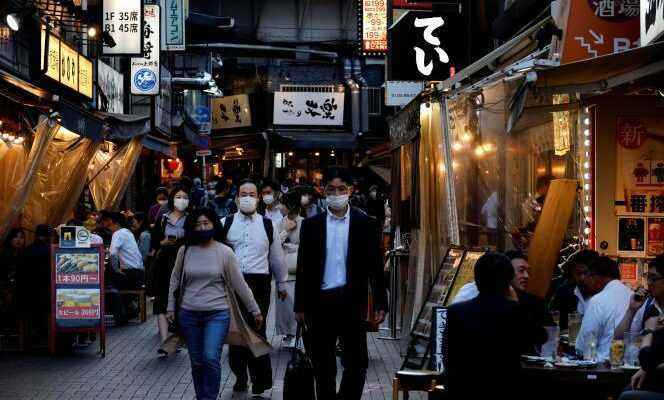After two years of closure to stem contamination by Covid-19 – including a particularly severe period of restrictions following the appearance of the Omicron variant, in October 2021 – Japan is partially ending an isolation which placed it in lagging behind other G7 countries and making it one of the last closed destinations. It plans to allow entry into the archipelago of 30,000 visitors per day (currently 20,000). Before the pandemic, there were an average of 100,000 daily arrivals on Japanese soil.
The new measures, in force since June 10, apply to tourists traveling in groups and to family members of foreign residents in the event of “exceptional circumstances”, including if they are PACS or unmarried spouses. But this procedure is of rare complexity, if not dissuasive. Since 1er March, Japan is also issuing visas again to students and people wishing to travel to the archipelago for professional reasons. But individual tourists are still not allowed.
Under the new provisions, foreign visitors are classified into three categories – blue, yellow and red – according to the risks of contamination presented by the country of which they are nationals. Those who belong to the group of 98 countries classified in blue where the risk of contamination is low – of which France is a part – are exempt from a test on arrival (required on departure) and from confinement. In the case of the other groups, the rules are more restrictive and can go, for the red group, up to a quarantine of three to seven days.
For most of the pandemic, Japan barred tourists from entering its territory and, in times of high virus circulation, it only allowed return to Japanese citizens and foreign residents, all of whom were subject to endless checks at the airport and a period of confinement.
Opinion in favor of restricting entry of foreigners
Japan has reopened to international flights from provincial airports, such as Naha (Okinawa) and Chitose (Hokkaido). The reopening of the archipelago should be spread over several months depending on the results of “test circuits” which have just been completed with small groups of tourists (from Australia, the United States, Singapore and the Thailand). Tests intended to assess the reaction capacities of the authorities in the event of the appearance of cases of contamination.
You have 56.27% of this article left to read. The following is for subscribers only.
